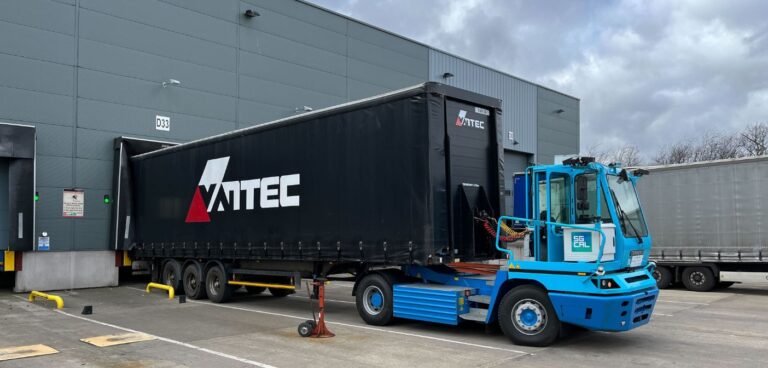The 5G Connected and Automated Logistics (5G CAL) project in the Northeast of England has moved to a new phase with autonomous driving testing of the UK’s first automated 40-tonne truck, powered by 5G, at Vantec in Sunderland.
5G CAL is a proof-of-concept project designed to assess how 5G connected and autonomous logistics operations can drive more efficiency into industrial supply chain operations.
The project consortium consists of businesses and institutions including the North East Automotive Alliance, Sunderland City Council, Newcastle University, Nissan, Vantec, Coventry University, Connected Places Catapult, StreetDrone and Perform Green.
Aiming to automate deliveries between suppliers and facilities, the pilot builds on work started by project partner Nissan 15 years ago to automate logistics using automated guided vehicles (AGVs), and could give rise to the first commercial opportunities and a carefully managed rollout on to public roads.
Following the onboarding of Terberg as a partner earlier this year, and the arrival of an updated autonomous and electric tractor unit in March, the vehicle has now been equipped with autonomous and teleoperation technology and is ready to deliver the UK’s first zero-emissions automated logistics test.
The vehicle’s teleoperations system uses next-generation technology connected to a private 5G network that allows remote teleoperations to inform the driver to switch from autonomous operation to remote driver controls, thereby overcoming unexpected conditions such as obstacles or objects on the road.
To ensure safety, project partner StreetDrone has added a series of drive-by-wire components, lidar sensors and cameras on the vehicle’s roof, which, when combined with additional lidars and cameras installed along the route, provide the truck with an extended field of view, augmenting its ability to react appropriately to changes in the external environment.
Martin Kendall, managing director at Vantec Europe, said: “The key focus at this point is to optimise communication between multiple autonomous vehicles operating together.
“As test trials continue, we would be looking at the vehicles dealing safely with bridges, traffic lights, roundabouts and security gates – all of which you would see on a typical real-life road journey. All the while, we are accelerating the development of autonomous software for the wider industry.”
Testing will continue for several weeks and will consist of self-driving testing on Nissan’s test track and testing of the teleoperations system, before progressing to live route testing from mid-April and proof-of-concept trials in late May for a number of weeks.
The 5G CAL project was awarded a share of £30m through 5G Create, an open competition combining British creativity with innovative new uses for 5G as part of the Department for Digital, Culture, Media and Sport’s £200m 5G Testbeds and Trials programme (5GTT).
The government has now funded 24 5G testbeds across the UK, which have trialled almost 70 different 5G technologies, products and applications.
The £30m package consists of £16.4m from the government match-funded by organisations ranging from large tech and telecoms companies to SMEs and local authorities.
Patrick Melia, chief executive at Sunderland City Council, said: “Equipping businesses across Sunderland with the next-generation infrastructure that we are building in our smart city, will allow us to continue breaking boundaries as we introduce new technology with an array of influential benefits for people and places.
“Shaping the future of connected automated logistics and urban mobility demonstrates our collective ambitions to lead more efficient, safer and environmentally friendly solutions to sustain our city, its prevalent industries and the planet alike.”





